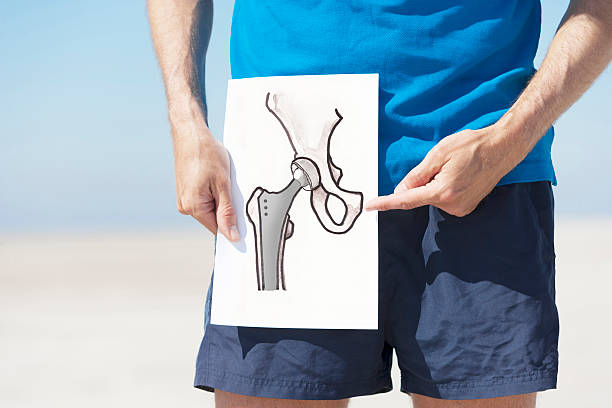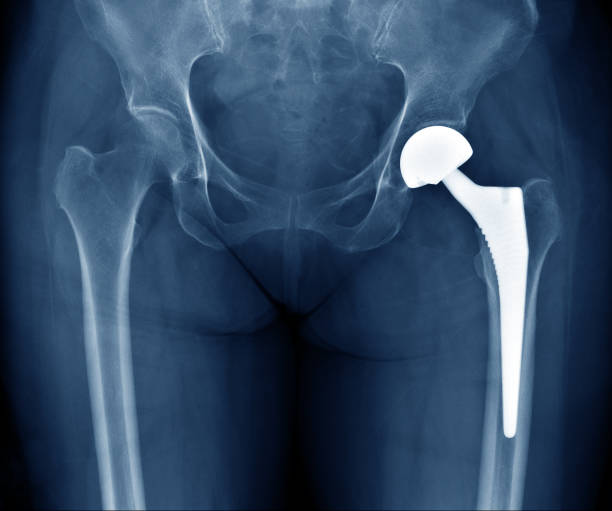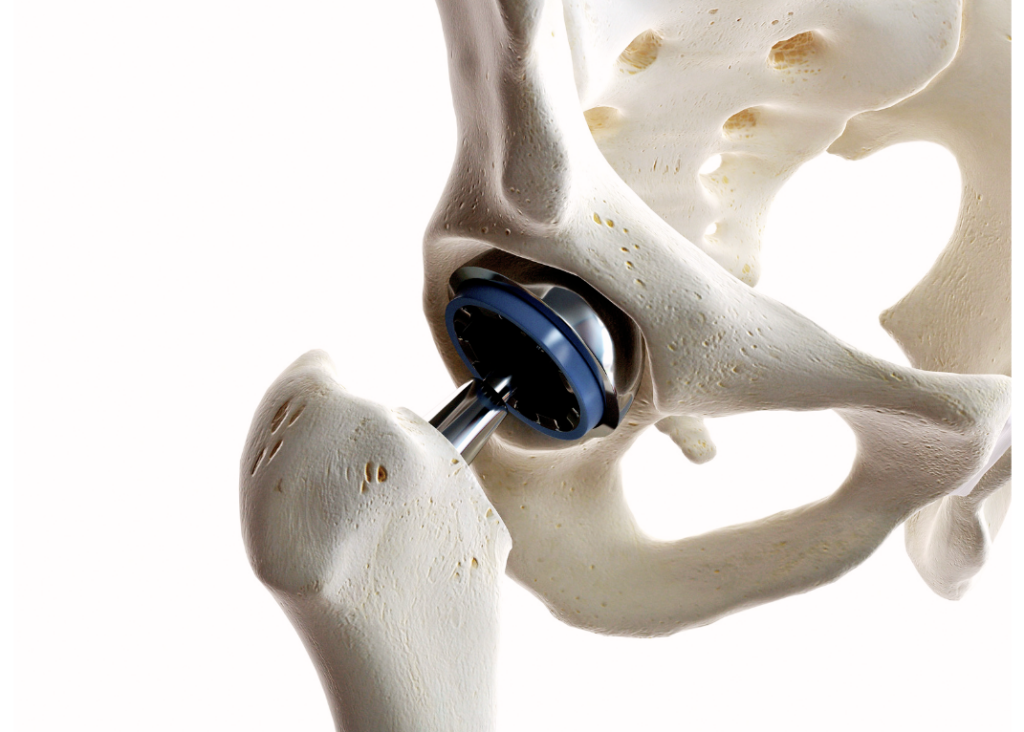Joint Health
What Is The Worst Joint Replacement?
In recent years, joint replacement surgeries have become more prevalent, with over a million treatments performed each year in the United States alone. While these procedures can give great comfort and enhance quality of life, they do not come without risks and problems. In fact, due to the severity and frequency of problems, certain joint replacements are deemed worse than others.
Certain joint replacements have been linked to an increased risk of problems such as infection, implant failure, and nerve injury, according to research. Hip replacements, for example, are generally seen to be safe and successful, but they can still result in complications such as dislocation, infection, and implant loosening. Knee replacements, on the other hand, have been linked to an increased risk of blood clots and nerve damage.
The likelihood of problems varies depending on a variety of factors, including the patient’s age, overall health, and the type of joint replacement surgery performed. Understanding the potential risks and difficulties connected with joint replacement surgery, on the other hand, might help people make informed healthcare decisions. In the parts that follow, we will look at some of the worst joint replacements and the hazards that come with them.

Identifying High-Risk Joint Replacements
There are always hazards associated with joint replacements. However, some joint replacements are thought to be more dangerous than others. This section will go over the complications of knee, hip, and shoulder replacements.
Knee Replacement Complications
Several issues can make knee replacements more difficult. Infection is one of the most serious dangers. Infections can occur during or after surgery and have devastating consequences. To treat the infection, the implant may need to be removed in some circumstances.
Dislocation is another concern connected with knee replacements. This can happen if the implant becomes loose or if the muscles and ligaments around the knee are too weak to keep the implant in place. Complications like as fractures and nerve damage are also possible.
Hip Replacement Challenges
Hip replacements are generally seen to be safe, however they can be complicated by a number of issues. As with knee replacements, infection is a considerable danger. Dislocation is another possible consequence, particularly in the first few months following surgery. It is also possible to sustain fractures and nerve damage.
The implant may not fit properly, which is one of the specific issues of hip replacements. If this happens, the implant may have to be removed and replaced.
Shoulder Replacement Risks
Although shoulder replacements are less prevalent than knee and hip replacements, they are not without danger. As with other joint replacements, infection is a considerable danger. Dislocation is another possible consequence, particularly in the first few months after surgery.
Nerve injury is one of the particular dangers of shoulder replacements. During surgery, the nerves surrounding the shoulder can be injured, resulting in arm weakness or numbness. Fractures are another possibility for problems.
In conclusion, knee, hip, and shoulder replacements all have hazards. Patients can make informed decisions regarding their treatment options if they understand the possible hazards related with each type of replacement.

Factors Influencing Joint Replacement Outcomes
A popular technique that can considerably improve a patient’s quality of life is joint replacement surgery. However, various factors can influence the surgery’s result. This section will go over some of the most critical factors that can influence joint replacement outcomes.
Patient Health Considerations
A number of pre-existing medical issues can have an impact on the success of joint replacement surgery. Patients with diabetes, for example, may be at a higher risk of problems such as infections and poor wound healing. Similarly, smokers may be more susceptible to infection and take longer to recuperate following surgery. Obesity can also increase the risk of problems and cause the joint replacement to fail prematurely.
Physical rehabilitation and exercise can also help with the effectiveness of joint replacement surgery. Patients who participate in regular physical therapy and exercise programs before and after surgery may heal faster and have better outcomes. Furthermore, patients who are proactive about living a healthy lifestyle, such as eating a nutritious food and exercising regularly, may have a decreased risk of problems and better long-term outcomes.
Surgical Technique and Implant Design
The surgical approach utilized during joint replacement surgery can also have an impact on the procedure’s result. Surgeons who employ minimally invasive procedures may be able to lessen complications and shorten recovery times. Furthermore, the type of anesthesia utilized during the treatment can affect the patient’s recovery time and general degree of comfort.
Another key aspect in joint replacement surgery outcome is implant design. Implant design advances have resulted in more durable and long-lasting joint replacements. Furthermore, computer-assisted surgery and 3D printing technology have allowed surgeons to manufacture personalized implants that are suited to the patient’s specific anatomy.
In conclusion, various factors can impact the effectiveness of joint replacement surgery. To lessen the risk of complications, patients should be proactive in maintaining a healthy lifestyle and controlling pre-existing health issues. Surgeons should also use cutting-edge surgical procedures and implant designs to achieve the greatest outcomes for their patients.
Postoperative Complications and Management
Joint replacement surgery is a big operation with serious postoperative consequences. These issues, however, can be avoided with good management. In this section, we will go over some of the most frequent postoperative issues and how to deal with them.
Infection and Blood Clot Prevention
Infection is one of the most serious postoperative consequences of joint replacement surgery. Infections can occur at the surgery site or in the area surrounding the prosthesis. Antibiotics are usually administered before and after surgery to avoid infection. Furthermore, the surgical team will take precautions to ensure a sterile atmosphere during the treatment.
Blood clotting is another typical problem. Blood clots can form in the leg veins and migrate to the lungs, causing pulmonary embolism, a potentially dangerous illness. Patients are frequently given blood thinners and encouraged to move around as soon as possible following surgery to prevent blood clots.
Pain Management and Rehabilitation
Pain control and rehabilitation are essential components of joint replacement surgery recovery. A mix of medicine and physical therapy can be used to manage pain. Patients are typically given pain medication immediately following surgery and then progressed to oral pain medication as they recuperate.
Rehabilitation is also essential for a full recovery. Physical therapy can assist in the improvement of mobility, strength, and range of motion. Physical therapy should be started as soon as feasible following surgery and continued for several weeks or months.
Overall, with careful care and attention, postoperative problems can be managed. Patients can recover effectively and restore their mobility and quality of life with the appropriate approach.

Improving Joint Replacement Success Rates
In recent years, innovations in orthopedic surgery and educational materials for patients have contributed to higher success rates in joint replacement surgery. In this part, we will look at some of these innovations and resources.
Advancements in Orthopedic Surgery
The adoption of less invasive procedures is a significant improvement in joint replacement surgery. Smaller incisions and less muscle tissue cutting are used in these treatments, resulting in less pain, shorter hospital stays, and faster healing times. Furthermore, 3D printing technology has enabled more exact implant sizing and customisation.
Clinical trials have also played an important role in increasing the success rate of joint replacement. These studies aid in the identification of the most successful surgical procedures, implant materials, and pain management measures. For example, the Mayo Clinic has done multiple clinical trials on joint replacement surgery, including studies on infection risk and ways for promoting healing.
Educational Resources for Patients
Patient education has also contributed to higher joint replacement success rates. Patients who understand the operation and what to expect during the healing process are better able to control their discomfort and avoid complications.
Orthopedic surgeons and healthcare practitioners can provide patients with joint replacement surgery instructional materials such as booklets, movies, and online tools. Furthermore, Medicare mandates patients to obtain specific instructional materials prior to having joint replacement surgery.
In conclusion, advances in orthopedic surgery and patient education have contributed to higher joint replacement success rates. Patients considering joint replacement surgery should speak with their orthopedic surgeon and healthcare provider to learn more about the process and what they can do to prepare for a healthy recovery.
Conclusion
Reflecting on the exploration into the realm of joint replacements, it’s clear that there’s no one-size-fits-all answer to the question of the “worst” joint replacement. My perspective on this matter has deepened, realizing that the choice of joint replacement depends on various factors unique to each individual.
Navigating this information has encouraged me to approach discussions on joint replacements with a nuanced understanding. If faced with such a decision, consulting with medical professionals and considering personal health goals would be my guiding principles.
In essence, the journey to the right joint replacement is a personal one, embracing individual needs and informed choices. Wishing everyone on this path clarity and the best possible joint health outcomes.


